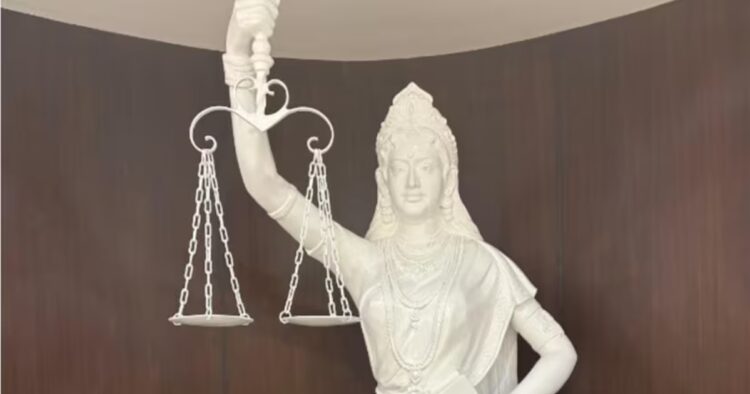The Supreme Court of India (SCI) has unveiled a redesigned version of the ‘Lady Justice’ statue, bringing a departure from its colonial past. The new statue now features ‘Lady Justice’ with open eyes and the Constitution of India in place of the sword, showing the judiciary’s commitment to constitutional values and justice that “sees everyone equally”. The removal of the blindfold from ‘Lady Justice’ is more than a visual change as it symbolises a shift in how the judiciary sees justice in modern India. The blindfold, long associated with impartiality and equality before the law, has been replaced with open eyes, a bold statement led by Chief Justice of India D Y Chandrachud.
“The law is not blind; it sees everyone equally,” CJI Chandrachud said during the unveiling. According to sources in the Supreme Court, this change reflects an evolving legal identity, one that distances itself from colonial symbols and embraces an Indian interpretation of justice. The updated statue stands proudly in the judges’ library, embodying a justice system that is aware, vigilant, and inclusive.
Another feature of the new ‘Lady Justice’ is the replacement of the sword with the Constitution. Previously, the sword represented authority and punishment, its replacement with the Constitution signifies a shift towards a more principled and balanced approach to justice. The Constitution, as the foundation of the judiciary’s role, signifies the upholding of rights, equality, and fairness over mere retribution.
A senior official from the Chief Justice’s office explained, ‘The sword is a symbol of violence, but courts deliver justice according to constitutional laws. The new statue aims to reflect this principle. The redesign of ‘Lady Justice’ aligns with a broader effort by the Indian judiciary to shed its colonial past.
Recent legal reforms, such as the introduction of the Bharatiya Nyaya Sanhita (BNS) to replace the Indian Penal Code (IPC), underscore this movement. CJI Chandrachud has been vocal about the need to break away from British-era symbols and laws, emphasising that the judiciary’s role is not punitive but protective of constitutional rights.
Justice Chandrachud believes that India should move forward from the British legacy, and that the law is never blind; it sees everyone equally. This philosophy is embodied in the redesigned ‘Lady Justice,’ which now represents the Constitution as the ultimate source of justice.

















Comments